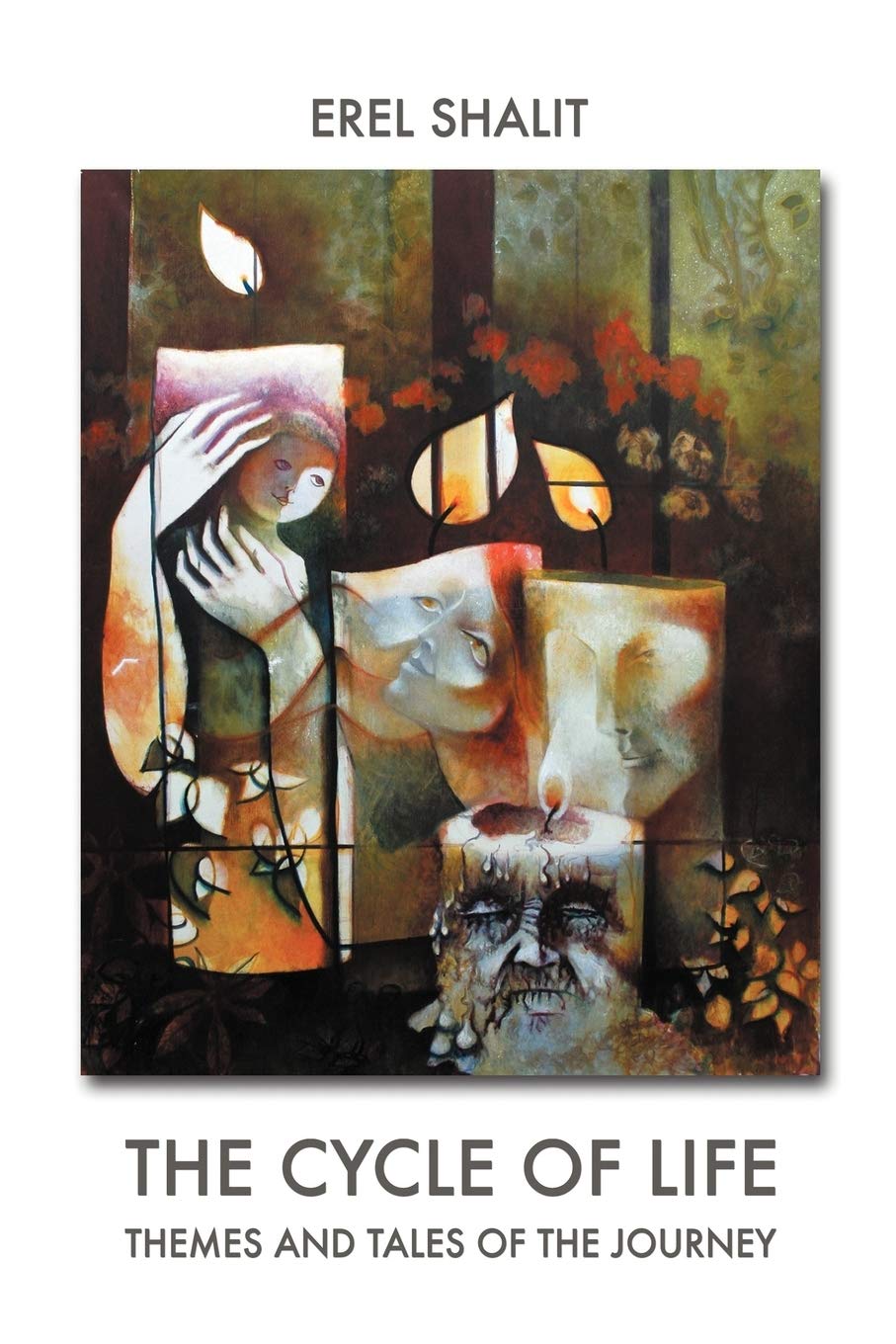➹ Shalit, E. (2011). The cycle of life: Themes and tales of the journey. Fisher King Press.
*These are notes from the portions of the text I was required to read for grad school. The potential gems of wisdom from this source are not represented in their totality.

Ch. 2: The Child
- A child is always born into conscious or unconscious fantasies and expectations. (52)
- an autonomous complex may interfere with the appropriate constellation of an archetype and the feelings related to it. (53)
- Furthermore, the traumas of one generation become the complexes of the next. (53)
- Prolonged identification with an archetype may likewise be disastrous, leading for instance to narcissistic inflation. (54)
- In the absence of adequate mothering, the complexes may fail in their task of transforming archetypes into living reality. The complex, as link between archetypal nucleus and personal experience, may then become dysfunctional. (54)
- We also find the orphan child, who in its human aspect embodies the premature abandonment of childhood. (55)
- Childhood, which is brought up so prominently for examination in the consulting room, is a narrative related to objects, relations and events of the past. It is the narrative that crystallizes in the looking glass of retrospection. In the same mirror of our psyche, this narrative of childhood will reflect back upon us, painting the colors of our present experiences and sense of identity. (56)
- In psychotherapy, we search for the child we once were, and for the wounds and the neglect that the child within us has to carry. However, while the child embodies the past, as well as our memories and ideas of our past, it also embraces our hopes for the future. The child holds the key to our potential and development. (57)
- We tend to think in a linear perspective, and thus follow the track back to our actual childhood. From an archetypal perspective, however, the idea precedes empirical experience. (57) #time
- Childhood is the age of man most directly exposed to the collective wisdom, as well as the folly of past generations. (57)
- In certain ways, the dead are resurrected in the child. (58)
- Our childhood visibly and tangibly carries and encompasses our shadow. (58)
- The child represents participation mystique, the mythical layer, the world of magic, play and fantasy. (58)
- Lailah and Lilith, whose name also means Night, are opposite aspects of the Great Mother archetype–the creative life-giving matrix vs. her destructive and terrible side, both of whom essentially walk side-by-side and hand-in-hand. (60)
- Water is the birth-giving source of life, and it serves the purposes of healing and purification in sacred rituals. (60)
- The divine child carries the magic of childhood, the natural libido prior to expulsion from paradise. This is the innocent and purposeless (yet of greatest importance) play of the child… (61)
- The divine child is close to the gods, that is, to the archetypal structures and energies. (61)
- The vivacious god Eros, who for Freud represented the principle of life, epitomizes the divine child. (62)
- In this sense, the child is not born from the adult, but gives birth to the adult, just as we may claim that psychologically, the Self as an original unity precedes the ego. (65)
- In the absence of Eros, the human child will not grow and develop. (67)
- As the principle of life, Eros has both divine and moral attributes. Like the newborn child, he might be a god or a mortal. The divine child wavers back and forth between divinity and the human. (67)
- The witch in the fairy tale, the Terrible Mother, is necessary to chase one out of Paradise and ensure development. (68)
- In the absence of human intervention, the divine child soon becomes an orphan, deserted and left to its own fate. Many an orphan in the real living world does not survive… This is different from the kernel of orphanhood, which is an archetypal and necessary experience in the development of a child. (72)
- The necessary and inevitable exit out of paradise is accompanied by the painful experience of abandonment. (73)
- The fear of annihilation is the fear of being devoured by the dark unconscious, by the Terrible Mother, that is, by the negative end of the Great Mother archetype. (74)
- In dreams, we frequently find the child who is threatened and endangered by dark forces. This may serve as a signal that the child within is in stress an possibly neglected. (74)
- The silent suffering of fear, the catatonia of panic, is that of Angerona, goddess of silence and suffering. (74)
- Dahlia always felt as if at the edge of a void, often feeling that she would fall helplessly into an empty abyss. (76)
- Subjectively, she felt the presence of soul and life in every detail and every object–or, alternatively, a sense of deadness. (77) #inanimateobjects
- the infant experiences the ultimate anxiety inherent in being at the edge of existence. (78)
- We must therefore recognize that the image of the abyss holds not only a frightening, annihilatory and negative aspect, but is archetypally bipolar. The abyss pertains to the original self no less than the sense of wholeness that the paradisiacal aspect provides, and from the abyss, wisdom is born. (80)
- Concurrently with the child’s development into a human being, it experiences the abandonment of archetypal fantasy. (83)
- Yet, even the person who has not been exposed to the trauma of abandonment can usually with ease recognize feelings of abandonment, since abandonment is archetypal. (84)
- The orphan child… His divine childhood may have been too short or non-existent. This is prominently the case with children who have suffered abuse, neglect and rejection, but also those who very early were heavily burdened by parental expectations, often emanating from parental incapacity to carry their own shadow, thereby projecting unfulfilled or compensatory expectations onto their children. Such burdensome projections may extinguish the spark of life and hamper the sense of joy in life. Likewise, parental obsessions… may deepen the sense of abandonment. (87)
Ch. 3: The Puer and the Puella
- Art and poetry… (89)
- How painful is the conflict of youth, to be trapped between shame and fear! (90)
- She had lived the life of a puella aeterna, a youthful life of travel and adventure free of commitments. (91) #[[Sagittarius]]
- Without doors there is separation without transition, preventing movement between the spheres. (91)
- There is fire of air, spirituality and consciousness, and there is fire of earth, of body and of passion, as well as Hestia, the hearth’s fire of home. (93) #Elements
- Wonder, Plato observed, is the beginning of philosophy. (98)
- Hephaestus and Hestia each signify two important aspects of the civilized fire, the crafts and the home. However, like everything archetypal, consciousness is bipolar. It entails Promethean forethought as well as the afterthought of Epimetheus. They coexist. (100)
- This act of defiance against the gods, essential to the process of separation-individuation, brings with it the “gnawing” sense of guilt, eternal picking on the seat of life, and the bonds of creative depression (102)
- The bipolarity of mood and affect, hilaria and tristia, that is, mania, too much fire, too strong passion, exaggerated self-esteem, alternating with melancholia, the lack and the loss–the lack or loss of fire, of spirit, of the loved one, of youth and vitality–is a distinct pathology of the puer-archetype. (106)
Ch. 4: The Adult
- Jung writes, “It is not I who create myself, rather I happen to myself.” (111)
- Edinger considers the archetype of the old wise man to be a personification of the ego-Self axis. Thus, the old craftsman is an inward aspect of the ego, who carefully relates to the god-image in one’s soul. (121)
- A life-stage transition and the initiation into a new stage in life by necessity entail sacrificing the archetypal core of the previous stage. (132)
Ch. 5: The Senex
Ch. 8: Self and Meaning
- The ego’s changing attitude, particularly in old age, often takes the shape of a transcendent or religious approach, which, as Daryl Sharp says, is “an attitude informed by the careful observation of, and respect for, invisible forces and personal experience,” indicating a subjective relationship to metaphysical and extramundane factors. (172)
- Consequently, past and present, inner as well as outer events in one’s life, are ‘linked-back,· reflected upon, so that their meaning can be identified and deepened. This is old age as an archetypal image, at whatever chronological age one finds oneself. That way, one’s individual ego may take its modest place as a link in the chain of generations, and open its heart to hear the voices of the ancestors, thus gaining from their wisdom., yet preserve its individual destiny and vocation. (172)
- While the ancestors had gathered her parents to them in death, Shulamit now, approaching old age, needed to approach the ancestors, so that she could gather them to her. The capacity to feel guilt. to know the debt we need to pay, serves as a necessary corridor to the depths of one’s soul, in which the forefathers and the birth-giving mothers come alive. (174)
- In old age, we often search our way back, recalling childhood memories, reconnecting with family background, a religion or a country left behind. Ve tend to return to where we came from. While the tasks of youth and young adulthood require breaking away from one’s roots. and to establish a separate and individual identity, now comes the time of return-though sometimes the road Home, “to whence I come, was a much longer and more painful road than the departure … “373 An interest in one’s family genealogy is a common expression of this (174)
- Thus, turning inwardly may well be paralleled by openness towards others. (175)
- She realized that the perfection she had strived for in her scientific work had little value at this stage of her life. Individuation has nothing to do with perfection (176)
- While we are not the creators of the garden, we need to guard and protect it, and tend to it (176)
- In old age, hearing becomes impaired and vision more blurred. For some, this provides an opportunity to open the senses to the pulsation of the soul, to hear the echoes of the sounds that arise from the depths, and perceive the reflection of the patterns that take shape under the sea. (177)
- Individuation entails the extraction of the spirit that dwells in one’s raw material, of detecting, awakening and engaging the energy that may be trapped in the matter. But the answer may, as well, drift in the water, flare in the fire, and ripen on the ground. (180)
- Anile means, as well, senile .. which seems to be no different between men and women- Ve may all become anile and senile. It also means ‘like an old woman.’ Anus is a woman who has come of age, a woman of many years, who knows to tell the often long-forgotten stories we need to hear. Without knowing where even the road less traveled leads us, we may only Humbly strive for the senex’s spirit of seniority and the anus’s annual celebrations, rather than being overtaken by the senilities and anilities of old age. (181)
